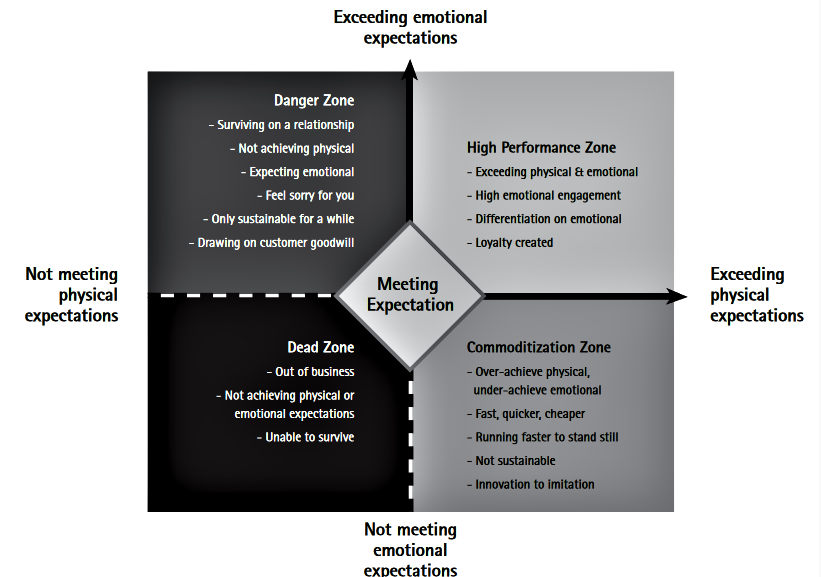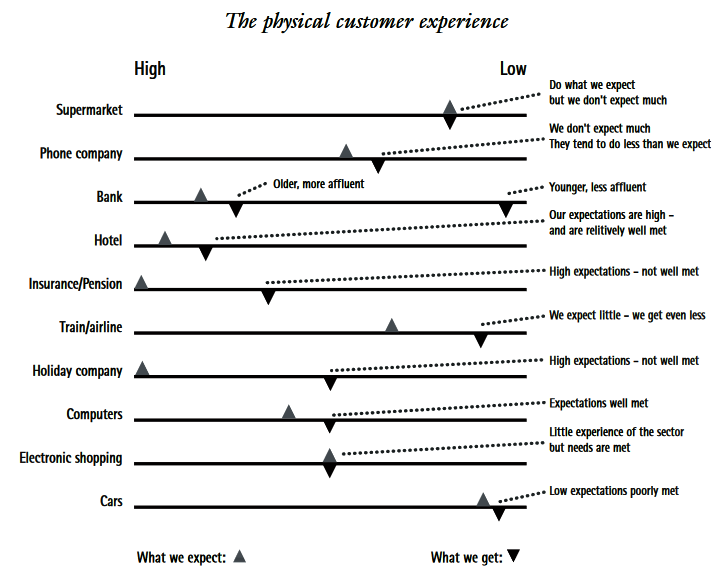Greetings, Bryce Biggs here, Strategy Lead at YourBigPic. Here to talk to you about pivoting in the context of customer experience. To recap a pivot means fundamentally changing the direction of your business when you realize products or services are not meeting customer needs. Alternatively, the process to go about meeting customer needs, may need revision.
The idea of pivoting was championed by Ries back in 2011 and two of the ten types of pivot identified by him were customer focused needs and customer segments as we can see from the diagram.

In a previous Wicked Challenges™ pivot video we looked at customer segments in the context of generational change. In this one we focus on the customer experience aspect.

In this diagram, this matrix shows us four possible outcomes of our current level of meeting customer expectations and only one of them is the one to be in - the high performance one. We definitely don't want the danger zone, the dead zone, and we don’t want the commoditization zone. So, we need to really look at whether we are meeting current customer expectations in terms of both their physical and emotional needs.
From the diagram below we can see that, depending on the industry sector you are in, there can be a big gap between what customers expect and what they get. Sometimes they are satisfied with very little because that is what they have got used to. Other times there’s quite a wide gap between what they would like and what they are getting which obviously opens up a window for competitors to come in and provide a better customer experience.

The customer experience strategy process goes through a number of stages – in this process six altogether. Clearly identifying the customer, what they expect from us, what our promise is to them, what journey they go through – and that journey has a number of touch points all of which can have a significant impact on customer experience and happiness. We then need to be looking at how we measure meeting of customer expectations. We need to analyse the results and then of course we need to embark on the important process of improvement.
An up-to-date review of your approach to customer experience could well make sense. Can we here at YourBigPic perhaps help you conduct it? Schedule a no obligation discussion with us to explore how our six-lens, interactive, Wicked Challenges™ approach can help you pivot to your optimal future customer experience.
The Wicked Challenge approach uses a six-lens, interactive, approach in conjunction with yourself and your team to identify where you are in your current customer experience situation and how you can pivot to a better location. The six lenses that we would apply with you are resourcing it, collaborating it, framing it, innovating it measuring it, and iterating it. So, these six lenses in various combinations and at various stages can help us working with you to advance your customer experience significantly.
We look forward to talking with you if what we have had to say is of interest. Thank you.
